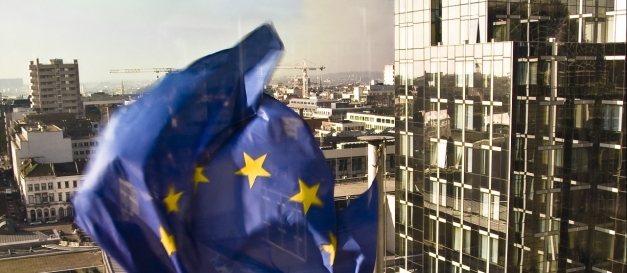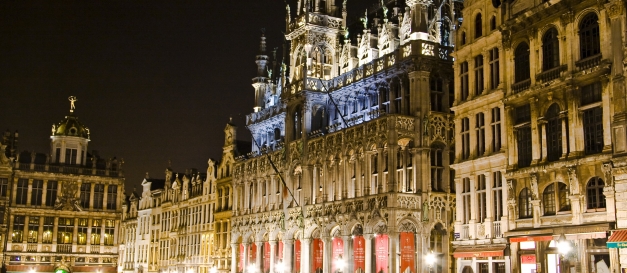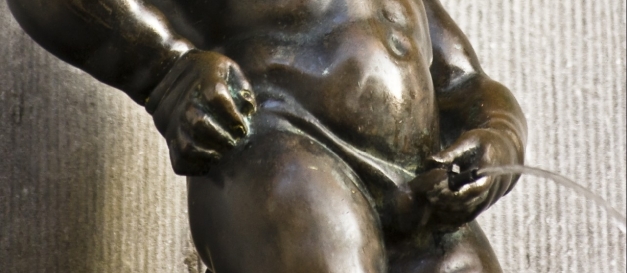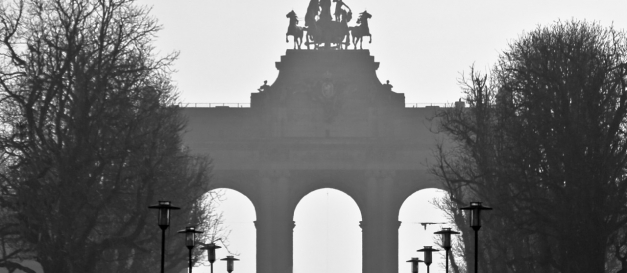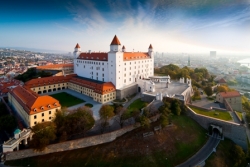Basic Information
Bratislava region
The Bratislava Region is one of the administrative regions of Slovakia. Its capital is Bratislava. It is the smallest of the eight regions of Slovakia. It is located in the south-western part of Slovakia and has an area of 2,053 km² and a population of 628 686 (2010). The current system of regions was introduced in 1996 and after the administrative regions became autonomous in 2002, it is governed by the Bratislava Self-Governing Region.
The geographical landscape structure is formed by southern part of the Malé Karpaty (Small Carpathians) mountains and Záhorská and Podunajská (Danube) lowlands.
The region borders Trnava Region in the north and east, Győr-Moson-Sopron county in Hungary in the south, Burgenland in Austria in the south-west and Lower Austria in the west. The Morava River forms part of the frontier with Austria, alongside with the second largest European river Danube, which forms 37 km of the frontier.
The region’s central location within the mid-European area, good transport access and the functions of international crossing both in road and railway transport, increasing importance of water and air transport and high rate of economic and social growth are amongst the most important development factors of the Bratislava Region.
The Bratislava Region comprises of 73 municipalities; one is the capital Bratislava and 6 towns (Malacky, Stupava, Svätý Jur, Pezinok, Modra, and Senec).
Being the economically best performing region in Slovakia, the Bratislava Region generates approximately 26 % of the country’s GDP. The regions economy comprises of all sectors that are based on traditional industrial production of goods. The most important sectors are: the chemical industry, automotive industry, mechanical engineering, electrotechncial and food processing industry.The current structural changes within the economy of the Region contribute to growth of the tertiary sector, mainly trade and services, banking and insurance sectors.
Tourism in Bratislava Region is a very important economic sector due to its favourable position. The region’s small area with attractive landscape and a large variety of fascinating natural beauties, and developed infrastructure create a good base for different types of tourist activities.
There are three protected landscape areas within the territory of the region: the Little Carpathians, Záhorie and Dunajské luhy.
The Danube river area offers water and lakes that are ideal for summer tourism, water sports and fishing. Záhorie possesses fascinating nature, historical monuments and water sport and recreation facilities. The Malé Karpaty (Small Carpathians) area is famous for it’s wine, cultural monuments and traditional crafts.
The products that most characterise the region around Bratislava are wine and ceramics. Local wine can be purchased from the numerous wineshops (vinotéka in Slovak) in Bratislava as well as local centres like Pezinok and Modra. For the pick of the crop, the National Collection of Wine in Pezinok sells bottles from its annual selection of Slovakia's best hundred vintages.
The most distinctive local style of pottery, known as majolika, is handmade in Modra. Influenced by the style and technique of the Habans, a now-disappeared Anabaptist community who used to live in the area, it is typically characterised by bold yellows and blues. Items ranging in size from eggcups to large wine jugs can be bought at craft stores in Modra, as well as in Bratislava and the region's other towns.
For more information please visit: www.bratislavskykraj.sk
Bratislava
Bratislava, the 'Little Big City', is one of Europe's most accessible capitals. With fewer than 500,000 inhabitants, good transport links, diverse history, culture and a great natural position, it is an attractive place to visit at any time.
Bratislava is one of Europe's youngest capitals, a status it acquired when Slovakia became independent following the break-up of Czechoslovakia in 1993. But it has served as a capital before.
The city's present name is a relatively new one for a very old city. It was adopted in 1919, after the creation of Czechoslovakia. Before then, Bratislava was known as Pressburg to German-speakers, Pozsony to Hungarians, and Prešporok to Slovaks.
Bratislava now has a diverse industrial and service-based economy but historically it was a wine-trading town. Vineyards can still be seen on the hills north of the city centre, and nearby towns such as Modra and Pezinok maintain a strong winemaking tradition. Slovak wine is highly regarded and widely available in Bratislava.
The city centre is fairly small, and most places of interest are within walking distance. The main geographical features are the River Danube, which forms the southern border of the downtown area, and the castle hill, which marks its western perimeter.
For more information please visit: visit.bratislava.sk
Photo: Bratislava Region
Number of views: 2797x
 Slovensky
Slovensky English
English Français
Français